Kisbee Bay Fiordland NZ
Sunday 31 December 2017: Roger
Around 20 years ago friends Alister and Vanya bought a share in Preservation Lodge at what was once the town of Cromarty. For years Alister, a keen hunter, entrepreneur, former helicopter pilot and karate exponent, has been encouraging me to spend a few days at the Lodge. Finally the stars have aligned and we are on our way. My daughter Victoria, fiancé Leighton, long-time friend Don and his girlfriend, Ngaire, met us at Queenstown and drove us to Te Anau where we picked up a few extra provisions before heading to Manapouri airport where provisions, gear and bodies were weighed. With 3.8kgs to spare (we are going to eat pretty well on the trip) we boarded the chopper. Leighton and Victoria had shopped well, even preparing a laminated menu for the trip.
 

Airborne we headed across lake Te Anau and down South Arm, gaining a bit of altitude. We continued south and slightly west over some stunning country. The bush line ends at 300ft. The land above that is rugged, colourful and dotted with tarns and some amazing waterfalls. Apologies for the poor quality of the pics – it is hard to take pics through the window of a helo. This is some of the most stunning scenery I have seen anywhere in the world.
After about 40mins flying we touched down at Preservation Lodge. The lodge was completed in the early nineties on a couple of sections in the the long ago abandoned town of Cromarty.
A little history: In 1773 Captain James Cook rocked up here and made a detailed survey of the sounds. The first sealers arrived in 1792 but by 1820 they ran out ot seals. A whaling station ran at Cuttle Cove in the early 1800s but ceased in 1838. In 1860 a coal mining company was formed at Preservation Inlet but was unsuccessful. In 1879 the Puysegur Point lighthouse lit up, visible from 20 miles away. In 1885 Philip Ryan came as an assistant lighthouse keeper but got sacked as he spent most of his time looking for gold. He and two others prospected on Coal Island. Word trickled back about gold on the island and by 1890 some seventy miners were digging away. Lewis Longuet stumbled across a 20 to 30 ounce nugget on the beach one night, then it was all on with people pushing up the inlet searching for their fortune. The town of Cromarty, with a sawmill, a pub, a school and a couple of boarding houses and shops, was established in 1892 with the discovery of gold in quartz in the Wilson River. By 1900 the gold rush was over and people moved on.
Flying in over Revolver Bay we landed in front of the lodge to meet a rather surprised caretaker. Ralph wasn’t expecting anyone until 3 January. We got the fire going to heat the cylinder supplying the 8 rooms and headed to the lounge with all its memorabilia to enjoy a drink and yarn while Leighton and Victoria prepared a very nice meal.
Monday 1 January: Sylvia
The day dawned bright and clear with only a light haze from the sandflies. Roger had mandated a route march for everyone up to Wilson River to see an old stamper from the gold mining period in that area. After a delicious and nourishing breakfast we headed off just after 10:30am. Between Roger, Don and Leighton I think we carried three Emergency Personal Locator Beacons, numerous survival blankets, a hoochie, two full first aid kits, Roger’s trusty red insulation tape, lunch, and most importantly a big block of chocolate.
The first part of the track was a little steep, rising ~100m in about 300m to join an old wooden tram line that had been built in the late 1800’s to provide access to the gold that had been found in Wilson’s River. It was known as the Golden Site Battery. Unfortunately the mine was really only productive for a few years and by 1901 all work had ceased permanently. The tram line ran for about eight kilometres and took two years to build. All that remains today are a few sleepers, the odd wooden rail and the occasional iron rails that were used only on the corners. The rest has either rotted or been buried.
However, following an old tram line meant the gradient for most of the walk was fairly easy with only about a 200m climb over 8km, most through pretty secondary growth with lots of manuka bush and scrub. Despite lovely weather the track was pretty wet in places. Ngaire managed the whole walk in a pair of cheap shoes from the Warehouse, but Don’s fancy boots that he has had well-over 20 years didn’t cope so well – the soles started to peel off on the trip back and needed first aid treatment with Roger’s trusty red insulation tape.
Along the path we came across many different relics of the civilisation that once existed here. The first major artefact was the boiler of the sawmill that was established to cut the timber for the houses and the tram line.
At the end of the tram line the track again got a bit steeper as we descended about 200m in about 500m to get down to the river where the 10-stamper battery still stands proudly beside the river, now well rusted but still very prominent – it was clearly once a very impressive piece of machinery. A little further up stream we found remnants of a water wheel, a 400mm diameter pipe to power the water wheel and a few other bits and pieces of derelict equipment. To be honest I probably spent more time admiring the beautiful river and the forest-clad hillside, resplendent with flowering rata trees.
We retraced our steps back to Kisbee Bay where we enjoyed a delicious steak and chips meal, again prepared by Leighton and Victoria.
Tuesday 2 January 2018: Roger
Don and Ngarie stayed around the lodge for a restful day. Leighton, Victoria, Sylvia and I took the little boat and headed down the Otago Retreat to the old lighthouse oil store, originally the place where supplies for the Puysegar Point light house were dropped off, now a shelter where people can stay as they transit through the area. There is also a small cemetery there where the body of James Cromarty and five others rest, most of whom drowned in the late 1800s.
We followed the track, once a good road, around and over a saddle and around the coast to the lighthouse. The scenery here is stunning with the wild weather bending trees and sand blasting the cliffs.
The lighthouse area, once almost a village, is now just crumbling foundations. There is a very secure ‘do not enter’ shed, a tank-shaped weather station and the original lighthouse still standing, now with a solar powered light.





On our return our boat rested on the sand, left high and dry by the outgoing tide.

After dragging the boat back into the water we headed to the north end of Coal Island. There are hundreds of crayfish pots along the way. Apparently this is where the fisherman store and feed their catch until the price is right to sell them. The Southern Rata trees with their bright red flowers stood out on the bush covered island.

Coal Island is now predator free. Quite a few kiwis have been released here and bird life is plentiful.





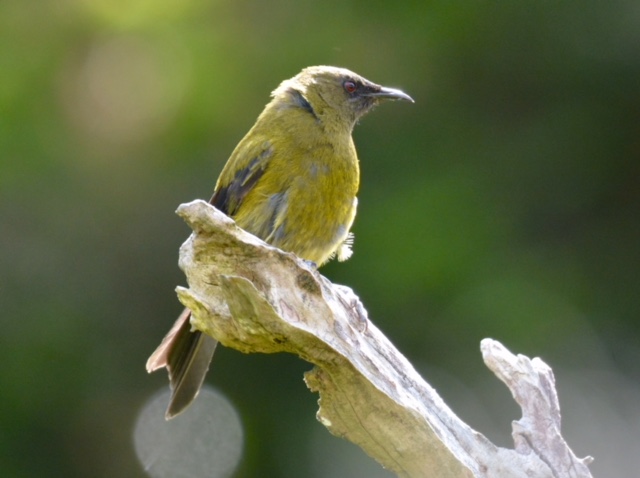


 

We made our way back across the inlet to Kisbee Bay. The tractor was still on the beach, parked by the mail box, so I jumped on, started it up and backed it down the beach to collect the boat, only to discover it had no brakes. I managed to crash it into first gear in order to stop it heading into the water and joining the bulldozer that fell off a barge many years ago and now rests a few meters out in the bay. This place even has its own mail box. Not sure if NZ Post has a jet ski delivery service.
We had a relaxing evening, Victoria and Leighton preparing a rather tasty dinner.
Wednesday 3 January: Sylvia
We have been incredibly lucky with the weather here and today dawned bright and clear again. Don and Ngaire headed off in the boat to add to their catch from yesterday evening so we could all enjoy a meal of fresh blue cod tonight. Leighton, Victoria, Roger and I had decided to walk over to Revolver Bay, the next Bay over from Kisbee Bay. It was a beautiful, gentle walk through some of the nicest native bush we have encountered so far. Most of the way it was very flat, meandering along beside the river. Roger kept his rifle at the ready in case we happened upon one of the many deer that were evidently in the area based on their tracks. This necessitated us walking fairly quietly. Victoria was suffering from blisters after all the walking the last few days and so decided to do the walk in her flash jandals (Havaianas with diamanté embellishments). The sandflies alone would have put me off attempting that.
A couple of times we lost the track and had to double back but otherwise it was a peaceful, uneventful walk. Lots of deer tracks but no sightings although we had heard some roaring sounds and so were staying alert.
We stopped at Revolver Bay to take in the view and scan the opposite banks for deer. About 20 minutes later we started to head back and then discovered that the tide had been coming in all around us. Having made the whole walk in dry shoes for the first time since we arrived here I was quite disappointed, although I have to admit a little bemused, to have to wade through mid-calf-deep water for the first 30 metres or so until we got back to dry track – Victoria had to go bare feet as the jandals kept getting stuck.
Suddenly we heard the roar of a stag just ahead. Roger raced off, giving us the stop and stay quiet signal. We waited for the shot but about three minutes later Roger called us over – it had not been a stag at all but a large sea lion, swimming up the river. As Roger put it “it was the largest freshwater fish I’ve seen in New Zealand”. We were able to keep sight of it was we walked along near the river for a bit. It looked a bit like a WWI soldier wearing a gas mask as it raised his head and blew out of his nostrils.
We made short work of the walk back to the lodge. Ngaire and Don had been successful in their fishing ventures and we all enjoyed some quiet time in the lodge.
Thursday 4 January: Roger
Don and Ngarie took a stroll out in the direction of Revolver Bay. Leighton, Victoria, Sylvia and I took the dingy and headed along the north side of Weka Island to the Cording islands. We stopped at the first one and I jumped off to check out the caves. It is a bit too rocky to tie the boat up so after a quick look around the north side of the island and a walk through a tunnel I reboarded. We took a look on the south side from the boat then headed up into Isthmus Sound.
Part way up the sound we eventually spotted a small orange triangle that indicated the track to the Tarawera Silver smelter.
Apparently the smelter with its chimney running up the hill never worked properly and the mine did not produce much silver. There are the remains of the odd dwelling where these really tough blokes from the past lived in hope and hardship waiting for the day they may, but never did, strike it rich.
We pushed on up the sound, the dingy with its 20-horse motor managing 10 knots.
At the top of the sound we tied up the boat to where someone had once had a mooring. We pushed our way up through some ferns to a ridge which we followed a short distance. Soon we were looking down on the waters of Chalky Sound. We headed back, stopping on top of the ridge where we enjoyed a late lunch among the beauty of this old native forest.




We quietly made our way back down the sound to Kisbee Bay. Ralph, the caretaker, this time backed the tractor down and we loaded the dingy up for the last time. At the lodge we washed the dingy down and flashed out the motor before storing it in the shed.
The rest of the day we sat and yarned, partly to Ralph and wife Tracey, who are the caretakers of the Lodge just now. They have both spent a lot of time in this part of the sounds exploring and enjoying the tranquil surrounding of the sea and native bush. Ralph and a mate once walked from here back to Tuatapere, which took around 8 days. He had lots of stories to tell and loved panning for gold in various places.

Leighton and Victoria prepared a selection of pizza toppings and we set about making our own pizzas for dinner. Leighton, a Staff Sergeant in the NZ army, recently was awarded top instructor for the army and was also one of the three finalists for soldier of the army.
Friday 5 January: Sylvia
We were all up bright and early this morning, packed up, rooms cleaned and ready to go when the helicopter touched down just after 8am.
We had another stunning flight, up Edwardson Sound, then Dusky Sound, skimming over the mountains and up the South Arm of Lake Manapouri back to the helicopter pad at Te Anau Helicopter services. There were small patches of cloud so the navigation was critical but our pilot clearly knew his way around skilfully finding breaks in the cloud and small passes between the mountains that we could fly through. If anything it was even more spectacular than the flight in five days ago.
It was a bit sad to come back to reality and face the multitude of emails and messages that awaited us as we drove back to Queenstown, stopping briefly at a charming cafe in Mossburn for breakfast.
We said goodbye to the others and boarded our flight to Auckland and back to full on civilisation. We were certainly very lucky with the weather – it was cooler and wetter in Te Anau and Queenstown than in Fiordland and we are heading north into major storms. What a fantastic place to get away from it all and experience the history and nature of New Zealand. A huge thank you to Alister and Vanya for letting us use the lodge.






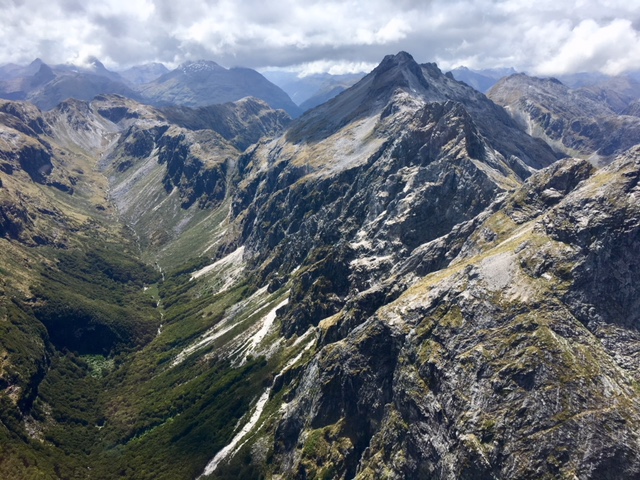
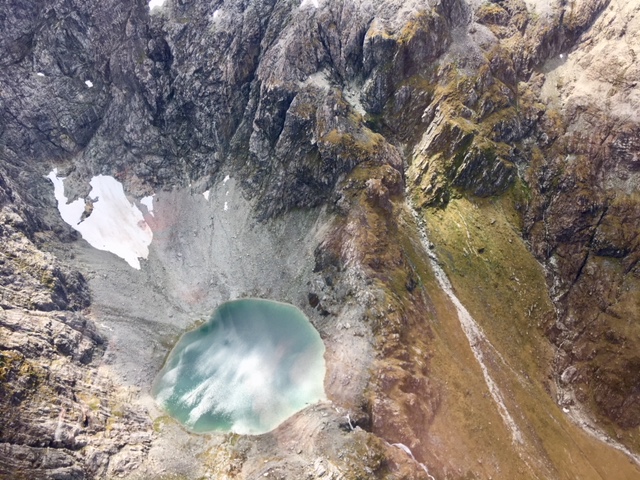



















































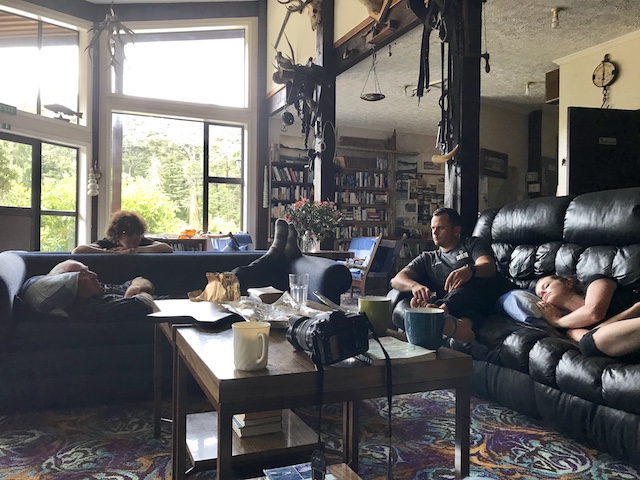

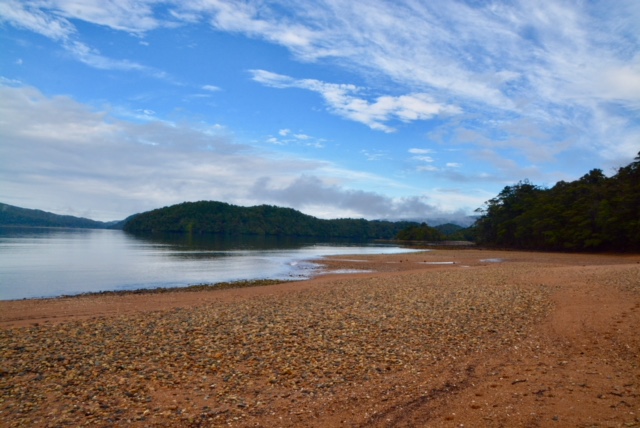









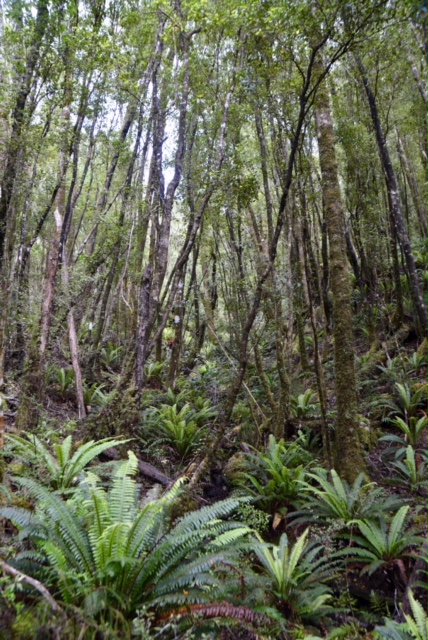












Hi John
Sorry only just saw this not sure if you have already gone.
Send me an email or message through here that I can reply to privately please.
Have a great trip
Hey Roger
I’m heading down to Chalky sound in a week. We are all set to camp but we’re wondering about having the back up of the lodge. We are getting towed in by a cray boat and might not be able to get picked up for awhile if the weather turns bad. Do you have contact details for the owners.
Cheers John Totty
lawnhayes@outlook.com
I have just done the Real Journeys trip 22 – 28 November 2020. It was the last thing on my bucketlist and I certainly enjoyed it very much. I haven’t read all your blog but love the photos. A fascinating area.
We popped along to the Lodge but no-one was there so we couldn’t have a look through it. That area had the most sandflies we came across or perhaps I didn’t put enough repellent on that day!
Normally I write a blog but didn’t this time but one of our party has kindly shared his with me.
Thanks Joshua
Sorry haven’t written much in the past few months. Should be back on the road soon.
Great read, thank you for taking the time to put this online.
Thanks Jeff Will do.
Please check your facts about Cromarty and how it got established.Fishermen from Scotland were supported by the early govrnment to set up a fishing industry there. Check out the historical writer John Hall Jones on Fiordland whom I have met i Preservation Inlet.
This place looks amazing! The scenery and the peace and quiet..
Sylvia, you are hilarious – ‘a light haze of sandflies’!
It’s true eh, dont leave home till you’ve seen the country.
A very interesting read. What a great trip.
Cheers Maureen and Neil
Ask Victoria if crayfish live in water
What wonderful scenery. You obviously had a great time
Thanks again you two. What a fabulous trip, and great photos again. Very impressed with your intrepidity (!) Sylvie. And walking in diamanté-studded jandals – legend Victoria!
After a nice comment like that I may just have to drop in next week and buy you lunch.
another fabulous trip!!
Roger and Sylvia,
Just you two together constitutes ADVENTURE! Just amazing. After all the places you’ve explored, recced, found awesome, gawped at…and we with you, it’s so interesting to realise some of the most astonishing and exciting areas you’ve visited and seen and experienced they’re so close to home.
Reminded me of our Ireland grandmother saying, (after I’d trekked all over the posh shops in London, then Belfast, spending Days and days looking for a wedding gown, I finally found what I wanted in Londonderry ) And Gran said ” you get what you really want in your own home country.
So there you go…and Boy, do you go?wonderful. Molly and Murray xxx